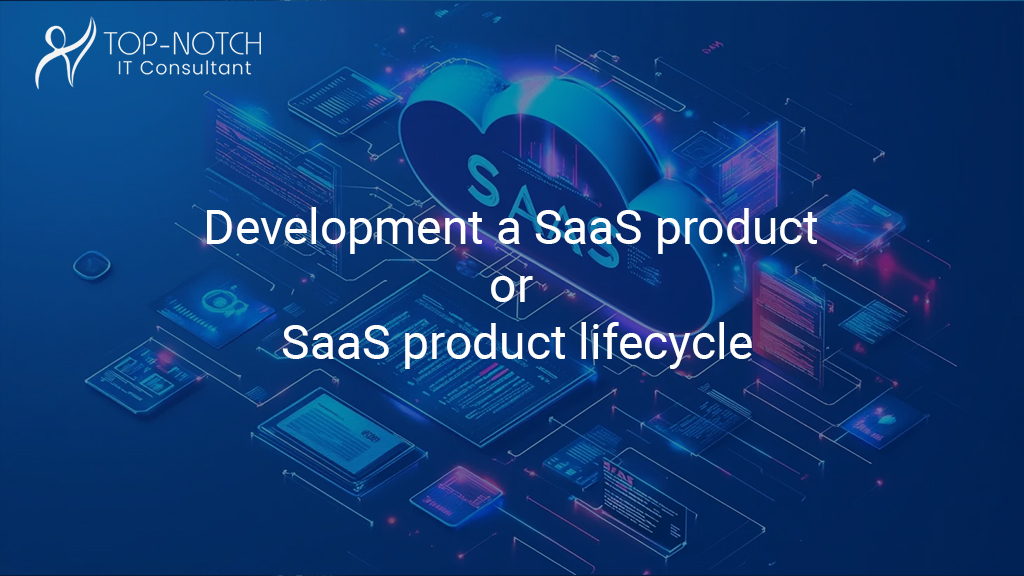How to Create a Successful SaaS Product: From Idea to Launch?

The SaaS or Software as a service market is growing at a rapid pace. By the year 2030, it is estimated that it will reach $908 billion, with a yearly increasing growth rate of 18% to 18.7%. A lot of companies choose the SaaS model because of its cost-cutting advantages, enhanced measurability and safety. So, if you are thinking about how to create a successful Saas product, let us know about it.
Know about a SaaS product.
SaaS is a mode for hosting software applications instead of the in-house servers of the organizations. Users have to make a payment of regular subscription fee for accessing a SaaS software product either through a browser or any dedicated application.
When compared with traditional on-premise software, this approach offers good benefits. The main benefit is that users get access to the application from any device through an internet connection without the requirement of installing anything. They can also initiate or stop product use at their convenience through subscription cancellation.
From a business point of view, the development of SaaS brings in substantial cost savings through the elimination of the need to establish the IT infrastructure. In addition, it also simplifies the software updates, facilitating developers to work on enhancements without disturbing the users. This makes sure there is software usage without any disruption and there is no revenue loss at the time of the update process.

Development a SaaS product or SaaS product lifecycle
For building a SaaS product, there is a need for thorough planning, efficient implementation and an understanding of the target market. It requires planning in various phases and each phase plays an important role in bringing in product adoption and penetration into the market.
Pre-SaaS product launch phase
This is a foundational phase for the overall success of the SaaS product that includes several planned activities designed for laying down the groundwork for a convincing SaaS product launch. Important components of this product launch phase are:
- Carry out market research and identify your target audience: You need to understand the target market, their requirements, weak points and competitive landscape. This is important for product development, market strategy and messaging.
- Development of product and refinement: This stage involves product iterating, recognizing the selling proposition as well as beta testing depending on market research and user feedback.
- Development of pricing strategy: Determination of the optimum pricing model needs careful consideration of the consumer value, revenue goals and the competitive landscape.
- Creating a pre-launch audience: Generating anticipation and interest prior to the official launch is important. This can be done by email marketing, social media campaigns and other programs like early access programs.
Product launching phase
This phase mainly includes the culmination of the efforts of pre-launch. It includes the implementation of the marketing plan and the introduction of the product in the market. Important activities include:
- Implementation of the marketing plan in several channels such as digital, PR, social media etc.
- Management of product release and updates such as setting up of date of launch, making sure there is a smooth rollout of the product, addressing technical issues and managing product updates.
- Managing initial consumer onboarding that offers seamless onboarding for the early adopters
- Collecting consumer feedback helps in recognizing areas for improvement and informing the product iterations.
- Keeping an eye on important performance indicators like consumer acquisition, consumer lifetime value and user engagement for measuring the success of launching.
Post–product launch phase
This phase mainly focuses on optimization of the product, increasing consumer experience depending on the behaviour of users and driving sustained growth. Important activities in this phase are:
- Analysis of the product performance through evaluation of the usage data of the product, consumer feedback and market trends for recognizing areas of improvement.
- Product iteration where the product updates are executed depending on the user feedback and dynamics of the market.
- Expansion of the market reach for reaching new segments of consumers and market for driving in growth.
- Developing a consumer community for enhancing consumer engagement and advocacy
TimeLine for SaaS product launch
In general, the SaaS product launch needs a few months to a few years and it varies substantially based on many factors such as:
- The complexity of the product: Those SaaS products that are simple and possess limited features require less time to launch than those with complicated enterprise solutions. SaaS products with exclusive features and incorporations might need 12-18 months or longer to reach a complete launch.
- Size of the team and expertise: A big, experienced team can do an expedition of the development and launching process.
- Method of development: Agile development often results in fast time to market when compared with waterfall methods.
- Resources: Sufficient financial resources and access to required tools can speed up the timeline of launching.
- Minimum Viable Product: For a simple MVP, it takes anywhere between 3-6 months for development, testing and launching.
It is vital to keep in mind that all these are simple estimates and the real timeline varies widely depending on the specified project needs and any unforeseen difficulties.
Conclusion
A successful SaaS product launch is broken down into three primary stages and all stages are important equally. The SaaS model provides several benefits when compared with traditional software. This involves repeating income, low starting costs, measurability, international reach, automatic updates and strong security.


The Role of QA in AI-Driven Software Development: Ensuring Accuracy and Reliability
February 19, 2025 Read More
Understanding the Environmental Impact of Cloud Computing: Strategies for Sustainable IT
February 12, 2025 Read More
